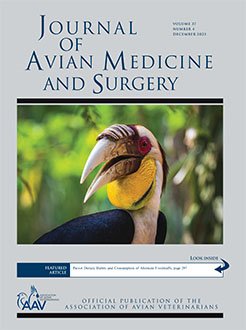Inappropriate diets cause many of the health problems commonly reported in parrots by psittaculturists and veterinarians. The dietary management of captive parrots would benefit from information derived from studies of dietary habits of wild parrots; however, it is unclear how complete this body of knowledge is at this time. Documentation of parrots' dietary habits appears to have grown dramatically over the past century. Reports of parrots consuming a number of foodstuffs beyond the reproductive parts of plants (alternate foodstuffs) have increased. The extent of alternate foodstuffs in parrot diets is currently unknown. We used Google search engines (ie, Scholar, Videos, Images) to determine how well psittaciform dietary habits have been studied to date and to quantify reports of alternate foodstuffs consumption among genera of Psittaciformes. We found that the dietary habits of over 43% of parrot species are poorly resolved. The dietary habits of 71.5% of parrot species classified by the International Union for Conservation of Nature as at risk of extinction are not well resolved. Parrots' consumption of alternate foodstuffs occurred at the following rates at the genus level: 91.2% foliage, 76.9% terrestrial invertebrates and fine earthen materials, 74.7% wood, 44% pure minerals, 34.1% vertebrates (9.9% dung), 29.7% sap, 19.8% roots, 17.6% charcoal, 18.7% epiphytes, 16.5% coarse earthen materials, 8.8% algae, and 6.6% aquatic invertebrates. Of these reports, 79.1% involved observations of wild parrots. Many parrot species may be more omnivorous than previously realized. Alternate foodstuffs are generally absent from current veterinary-based dietary recommendations for captive parrots. Future studies are needed to determine whether providing alternate foodstuffs to captive parrots can be used as a means to improve their diets and thus their health, welfare, and reproductive success.
How to translate text using browser tools
15 February 2024
Parrot Dietary Habits and Consumption of Alternate Foodstuffs
Elise V. Voltura,
Donald J. Brightsmith,
Juan Cornejo,
Ian Tizard,
Christopher A. Bailey,
J. Jill Heatley
ACCESS THE FULL ARTICLE
Avian
feeding ecology
nutrition
psittacid
Psittaciformes
psittacine
zoopharmacognosy





